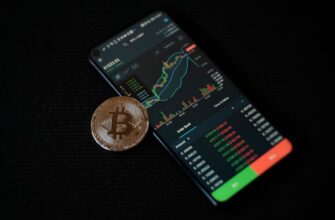- What is USDT-Margined Futures Trading on Binance?
- Why Trade Futures Using Daily Timeframes?
- Step-by-Step Guide to Daily Timeframe Futures Trading with USDT on Binance
- Step 1: Account Setup & Funding
- Step 2: Chart Configuration
- Step 3: Trade Execution
- Step 4: Daily Management Routine
- Essential Daily Trading Strategies
- Risk Management Best Practices
- Frequently Asked Questions (FAQ)
- Q1: What’s the minimum USDT needed to start?
- Q2: How are fees calculated?
- Q3: Can I trade 24/7 with daily candles?
- Q4: What leverage is safe for daily trading?
- Q5: How do taxes work on Binance futures profits?
What is USDT-Margined Futures Trading on Binance?
USDT-margined futures on Binance allow traders to speculate on cryptocurrency price movements using Tether (USDT) as collateral. Unlike spot trading, futures enable you to profit from both rising (long) and falling (short) markets with leverage. Binance’s platform offers deep liquidity, competitive fees, and a seamless interface—making it ideal for daily timeframe strategies that capitalize on broader market trends rather than intraday noise.
Why Trade Futures Using Daily Timeframes?
Daily charts filter out market “noise” by consolidating price action into single daily candles. This approach benefits traders by:
- Reducing emotional decision-making from short-term volatility
- Aligning with fundamental trends and macroeconomic events
- Requiring less screen time (1-2 checks per day)
- Providing clearer support/resistance levels
- Lowering transaction costs versus scalping
For USDT-margined positions, the daily timeframe simplifies risk management while leveraging Binance’s robust trading tools.
Step-by-Step Guide to Daily Timeframe Futures Trading with USDT on Binance
Step 1: Account Setup & Funding
- Create a Binance account and complete KYC verification
- Enable Two-Factor Authentication (2FA) for security
- Deposit USDT via bank transfer, card, or crypto wallet
- Navigate to [Derivatives] → [USDⓈ-M Futures]
Step 2: Chart Configuration
- Select your trading pair (e.g., BTCUSDT)
- Set chart timeframe to “1D” (daily)
- Add technical indicators: EMA(50), EMA(200), RSI(14)
- Draw key support/resistance lines using horizontal tools
Step 3: Trade Execution
- Analyze daily candle closes for trend confirmation
- Choose leverage (start with ≤5x for beginners)
- Place limit/market orders:
- LONG: When price breaks above resistance with volume
- SHORT: When price breaks below support with momentum
- Set stop-loss (1-3% below entry for longs, above for shorts)
- Set take-profit at 2:1 risk-reward ratio minimum
Step 4: Daily Management Routine
- Check positions at candle close (UTC 00:00)
- Adjust stop-loss to breakeven once profit ≥ risk amount
- Monitor weekly economic calendars for event risks
- Never risk >2% of capital per trade
Essential Daily Trading Strategies
- Trend Following: Enter when EMA(50) crosses EMA(200) with RSI >50/<50
- Breakout Trading: Target assets consolidating near 20-day highs/lows
- Divergence Plays: Spot RSI/momentum divergences at key levels
Always backtest strategies using Binance’s historical data before live execution.
Risk Management Best Practices
- Use isolated margin mode to contain losses
- Avoid over-leveraging—high leverage amplifies slippage
- Diversify across 3-5 non-correlated assets
- Close positions before major news events if volatility-sensitive
Frequently Asked Questions (FAQ)
Q1: What’s the minimum USDT needed to start?
A1: Binance allows trading with as little as $10, but $200+ is recommended for effective daily timeframe risk management.
Q2: How are fees calculated?
A2: Binance charges 0.02% maker / 0.04% taker fees. Fees are deducted in USDT upon trade execution.
Q3: Can I trade 24/7 with daily candles?
A3: Yes! Daily candles reset at 00:00 UTC daily. Monitor closes regardless of timezone.
Q4: What leverage is safe for daily trading?
A4: Conservative traders use 2x-5x. Never exceed leverage that risks >5% of your account per trade.
Q5: How do taxes work on Binance futures profits?
A5: Profits are typically taxable events. Consult a tax professional in your jurisdiction for specifics.
Final Tip: Consistency beats complexity. Stick to your daily checklist, review weekly performance metrics, and use Binance’s demo mode to refine your approach without financial risk.








